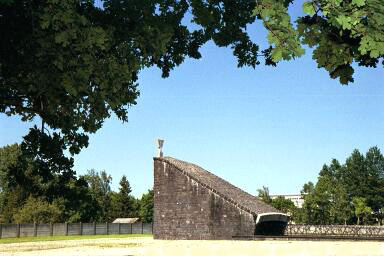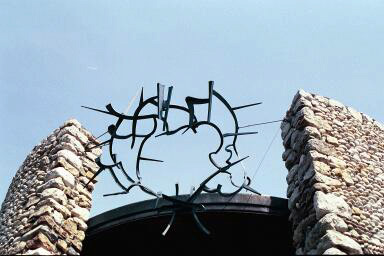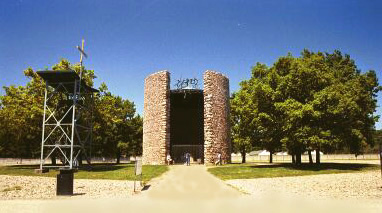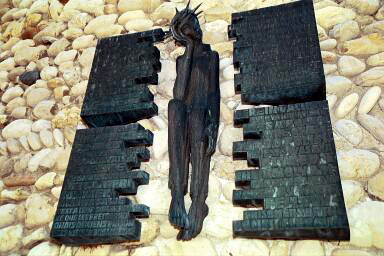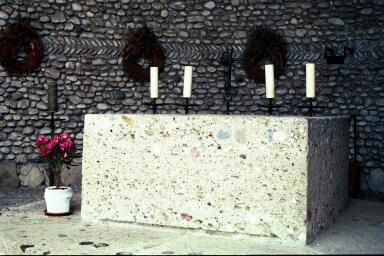Church of the Mortal Agony of ChristMany first-time visitors to the former Dachau concentration camp are shocked, as I was, to find that the most prominent spot in the present-day Memorial Site is occupied by a Catholic Church. Since the first news reports about Dachau at the end of April 1945, the concentration camp has always been associated, in the minds of most people, with the death of 6 million Jews in the Holocaust. On both of my visits to the Dachau Memorial Site, I overheard several people commenting that they didn't think it was appropriate to have Christian memorials at the site where so many Jews had suffered and died. Actually, the majority of the prisoners at Dachau were Catholic, including many Polish, Italian and French inmates. They were not sent to Dachau because of their religious beliefs, but because they were anti-Nazi resistance fighters. In addition, numerous Russian Prisoners of War, who were Russian Orthodox Catholics, perished at Dachau. After 1940, all the Catholic priests, who had been imprisoned by the Nazis for preaching against the government, were consolidated at the Dachau camp. A total of 2,579 Catholic clergymen were among the inmates at Dachau, including many anti-Nazi priests brought from Poland. Although the Catholic Church itself was not officially opposed to Hitler, himself a non-practicing Catholic, the majority of the prisoners who died in the camp were Roman Catholic. The name of the Catholic chapel is Todeangst Christi. It is usually translated as Mortal Agony of Christ in English, although the literal translation of the German title would be Christ's Mortal Fear. The church was built in 1960 at the instigation of Dr. Johannes Neuhäusler, a former inmate of the camp who became a Bishop in Munich after the war. Neuhäusler was arrested in 1941 for breaking one of the laws of the Nazi government by publicly reading the critical writings of Cardinal Faulhaber, who opposed the Nazi regime. He was first taken to the Sachsenhausen concentration camp near Berlin and then transferred to Dachau a few months later. The Church of the Mortal Agony of Christ, designed by German architect Josef Wiedemann, stands on a circular island of grass surrounded by a ring of oak trees, as the first picture below shows. It is 14 meters high and the base is 14 meters in diameter. The entrance features a wrought iron gate which was locked when I was there. The interior is exposed to the elements through a front opening that is the same height as the interior of the building. The circular wall was constructed of reinforced concrete and then covered on both sides with a veneer of river rocks, taken from the Isar river. Construction required only four months to complete. After the Catholic memorial was completed, Dr. Neuhäusler generously suggested that a Protestant Memorial and a Jewish Memorial be built on either side of the Catholic one. He proposed a Memorial Site layout with trees planted in between the old barracks and lush green landscaping surrounding all the religious memorials, but the architects of the Jewish and Protestant memorials preferred to have their buildings isolated in a sea of coarse gravel. The second picture shows a view of the west side of the Jewish Memorial taken from the cool shade of one of the beautiful oak trees surrounding the Catholic chapel. 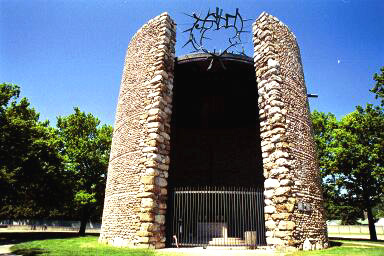
|
